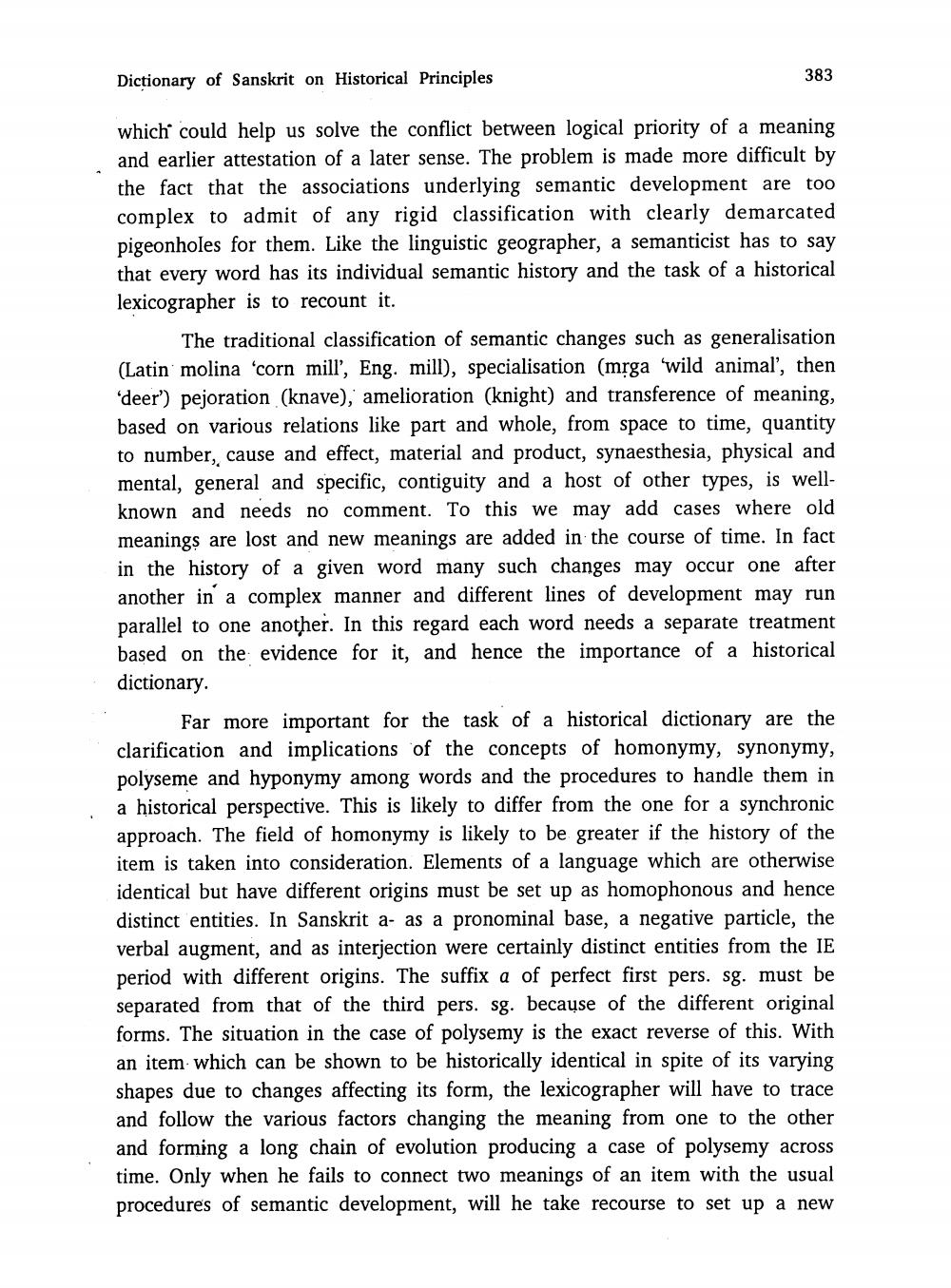________________
Dictionary of Sanskrit on Historical Principles
383
which could help us solve the conflict between logical priority of a meaning and earlier attestation of a later sense. The problem is made more difficult by the fact that the associations underlying semantic development are too complex to admit of any rigid classification with clearly demarcated pigeonholes for them. Like the linguistic geographer, a semanticist has to say that every word has its individual semantic history and the task of a historical lexicographer is to recount it.
The traditional classification of semantic changes such as generalisation (Latin molina 'corn mill', Eng. mill), specialisation (mrga wild animal', then deer) pejoration (knave), amelioration (knight) and transference of meaning, based on various relations like part and whole, from space to time, quantity to number, cause and effect, material and product, synaesthesia, physical and mental, general and specific, contiguity and a host of other types, is wellknown and needs no comment. To this we may add cases where old meanings are lost and new meanings are added in the course of time. In fact in the history of a given word many such changes may occur one after another in a complex manner and different lines of development may run parallel to one another. In this regard each word needs a separate treatment based on the evidence for it, and hence the importance of a historical dictionary
far more important for the task of a historical dictionary are the clarification and implications of the concepts of homonymy, synonymy, polyseme and hyponymy among words and the procedures to handle them in a historical perspective. This is likely to differ from the one for a synchronic approach. The field of homonymy is likely to be greater if the history of the item is taken into consideration. Elements of a language which are otherwise identical but have different origins must be set up as homophonous and hence distinct entities. In Sanskrit a- as a pronominal base, a negative particle, the verbal augment, and as interjection were certainly distinct entities from the IE period with different origins. The suffix a of perfect first pers. sg. must be separated from that of the third pers. sg. because of the different original forms. The situation in the case of polysemy is the exact reverse of this. With an item which can be shown to be historically identical in spite of its varying shapes due to changes affecting its form, the lexicographer will have to trace and follow the various factors changing the meaning from one to the other and forming a long chain of evolution producing a case of polysemy across time. Only when he fails to connect two meanings of an item with the usual procedures of semantic development, will he take recourse to set up a new




